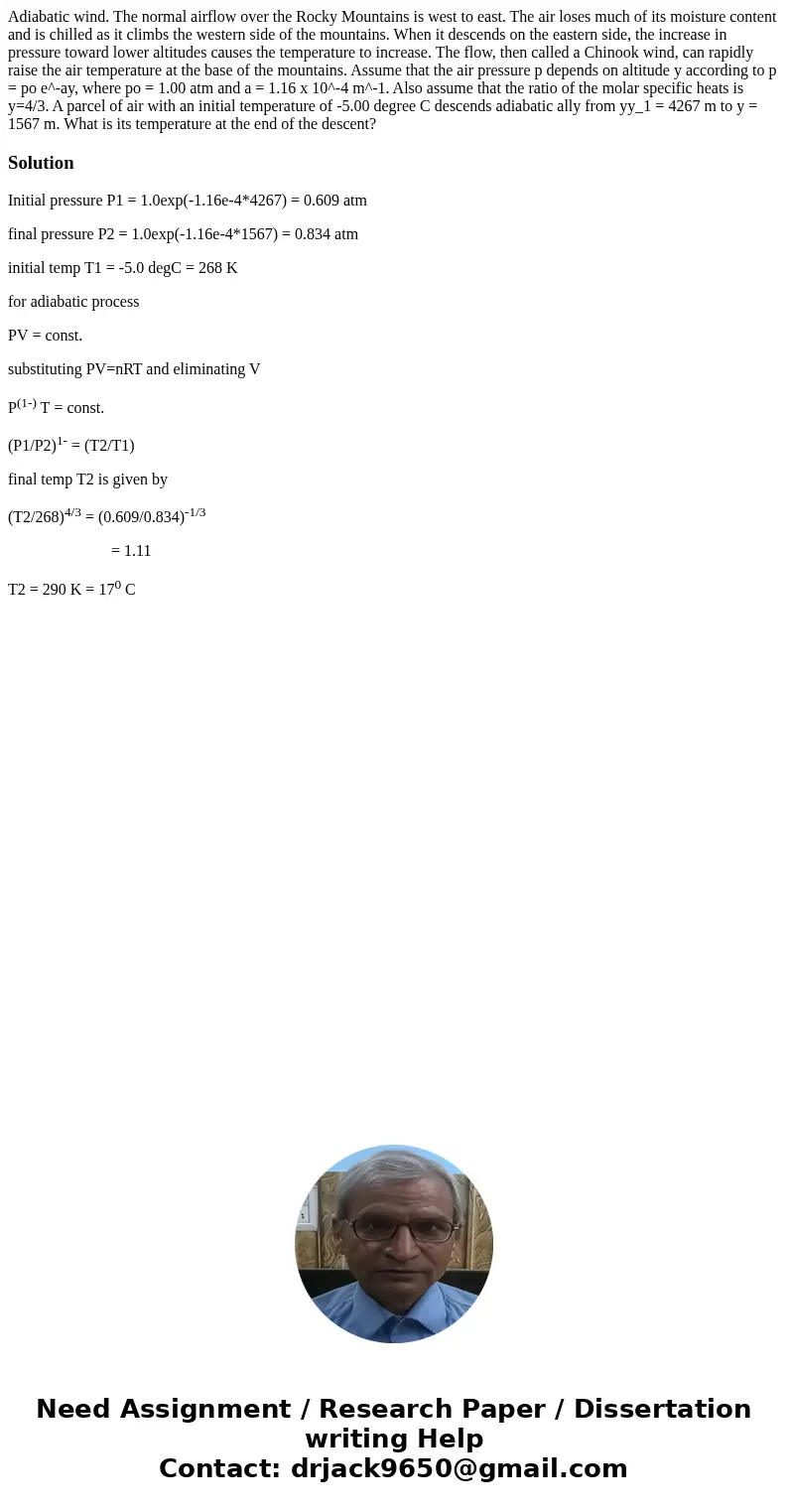Adiabatic wind The normal airflow over the Rocky Mountains i
Adiabatic wind. The normal airflow over the Rocky Mountains is west to east. The air loses much of its moisture content and is chilled as it climbs the western side of the mountains. When it descends on the eastern side, the increase in pressure toward lower altitudes causes the temperature to increase. The flow, then called a Chinook wind, can rapidly raise the air temperature at the base of the mountains. Assume that the air pressure p depends on altitude y according to p = po e^-ay, where po = 1.00 atm and a = 1.16 x 10^-4 m^-1. Also assume that the ratio of the molar specific heats is y=4/3. A parcel of air with an initial temperature of -5.00 degree C descends adiabatic ally from yy_1 = 4267 m to y = 1567 m. What is its temperature at the end of the descent?
Solution
Initial pressure P1 = 1.0exp(-1.16e-4*4267) = 0.609 atm
final pressure P2 = 1.0exp(-1.16e-4*1567) = 0.834 atm
initial temp T1 = -5.0 degC = 268 K
for adiabatic process
PV = const.
substituting PV=nRT and eliminating V
P(1-) T = const.
(P1/P2)1- = (T2/T1)
final temp T2 is given by
(T2/268)4/3 = (0.609/0.834)-1/3
= 1.11
T2 = 290 K = 170 C

 Homework Sourse
Homework Sourse